Burrawang, Pineapple Zamia, Shining Burrawang
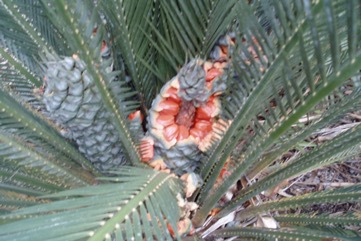
It suits subtropical and temperate regions. It can grow in full sun or shade. It can tolerate frost. Plants grow best is soils which are free draining but retain moisture and have organic matter. In Eastern Australia it grows from sea level to 1000 m altitude. It suits hardiness zones 10-12. It can grow in a Mediterranean climate.
Also known as:
Scaly zamia, Sikas zamia bersisik, Sikas zamia nanas
Synonyms
- Macrozamia denisonii F.Muell.
Edible Portion
- Seeds kernel, Nuts
Where does Burrawang grow?
Found in: Asia, Australia,Indonesia, SE Asia
Notes: There are 2 living Lepidozamia species.
Growing Burrawang, Pineapple Zamia, Shining Burrawang
Cultivation: Plants are grown from seed. They are slow to germinate. They can take a year to germinate.
Edible Uses: CAUTION: The seeds are poisonous. The seeds are eaten after soaking and roasting to remove the toxins. The stems are the source of starch.
Nutrition Info
per 100g edible portion| Edible Part | Energy (kcal) | Protein (g) | Iron (mg) | Vitamin A (ug) | Vitamin c (mg) | Zinc (mg) | % Water |
|---|---|---|---|---|---|---|---|
| Seeds treated | - | 9.3 | 7 | - | - | 2.2 | 3.1 |
| - | - | - | - | - | - |
Burrawang, Pineapple Zamia, Shining Burrawang Photos

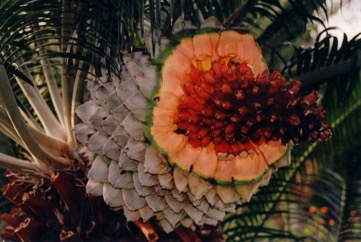
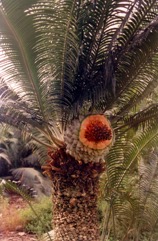
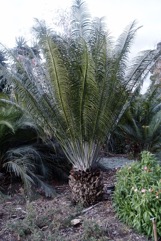
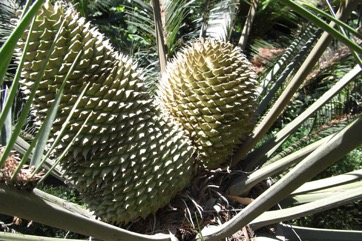
References
Asmussen, B., 2011, Changing perspectives in Australian Archaeology, part 10. Australian Museum
Blomberry, A.M., 1979, Australian Native Plants. Angus and Robertson p 195
Brickell, C. (Ed.), 1999, The Royal Horticultural Society A-Z Encyclopedia of Garden Plants. Convent Garden Books. p 601
Bull. Soc. Imp. Naturalistes Moscou 30(1):184, t. 4, fig. 20, 21. 1857
Cherikoff V. & Isaacs, J., The Bush Food Handbook. How to gather, grow, process and cook Australian Wild Foods. Ti Tree Press, Australia p 200
Cribb, A.B. & J.W., 1976, Wild Food in Australia, Fontana. p 87
Cronin, L., 1989, The Concise Australian Flora. Reed. p 258
Cundall, P., (ed.), 2004, Gardening Australia: flora: the gardener's bible. ABC Books. p 806
Elliot, R., 2003, Australian Plants for Mediterranean Climate gardens. Rosenberg. p 55
Elliot, W.R., & Jones, D.L., 1993, Encyclopedia of Australian Plants suitable for cultivation. Vol 6. Lothian. p 97 (Photos)
Etherington, K., & Imwold, D., (Eds), 2001, Botanica's Trees & Shrubs. The illustrated A-Z of over 8500 trees and shrubs. Random House, Australia. p 429
Facciola, S., 1998, Cornucopia 2: a Source Book of Edible Plants. Kampong Publications, p 247 (As Macrozamia denisonii)
Greig, D., 1996, Flowering Natives for Home Gardens. Angus & Robertson. p 245
Hibbert, M., 2002, The Aussie Plant Finder 2002, Florilegium. p 181
Jones D, L, 1986, Ornamental Rainforest Plants in Australia, Reed Books, p 331
Jones, D.L., 2000, Cycads of the world. Reed New Holland. p 229
Lazarides, M. & Hince, B., 1993, Handbook of Economic Plants of Australia, CSIRO. p 147
Lord, E.E., & Willis, J.H., 1999, Shrubs and Trees for Australian gardens. Lothian. p 97
Low, T., 1991, Wild Food Plants of Australia. Australian Nature FieldGuide, Angus & Robertson. p 138
Marinelli, J. (Ed), 2004, Plant. DK. p 374
Morley, B.D., & Toelken, H.R., (Eds), 1983, Flowering Plants in Australia. Rigby. p 28
Nicholson, N & H., 1996, Australian Rainforest Plants, Terania Rainforest Publishing. NSW. p 41
Ratcliffe D & P., 1987, Australian Native Plants for Indoors. Little Hills press. p 101
Ryan, M. (Ed.), 2003, Wild Plants of Greater Brisbane. Queensland Museum. p 205
Sukarya, D. G., (Ed.) 2013, 3,500 Plant Species of the Botanic Gardens of Indonesia. LIPI p 830
Townsend, K., 1994, Across the Top. Gardening with Australian Plants in the tropics. Society for Growing Australian Plants, Townsville Branch Inc. p 276
Williams, J.B., Harden, G.J., and McDonald, W.J.F., 1984, Trees and shrubs in rainforests of New South Wales and Southern Queensland. Univ. of New England, Armidale. p 19
Williams, K.A.W., 1999, Native Plants of Queensland Volume 4. Keith A.W. Williams North Ipswich, Australia. p 246
World Checklist of Useful Plant Species 2020. Royal Botanic Gardens, Kew